Understanding the Montessori Lingo
by Matt Bronsil, author of English as a Foreign Language in the Montessori Classroom
There is a lot of terminology we use in Montessori that may be unfamiliar to people outside the Montessori community. Absorbent mind? Normalization? Work cycle? This often leads to confusion, even when discussing ideas with other educators. This is a list of some of the more common words or phrases used. If you're just looking for a specific word, look at the list below and click on the word you want to learn about. If you do not see the word or phrase here you are wondering about and you still have a question, please contact me and I will try to help. If you would like to use this information in a newletter, website, blog, etc. feel free as long as you provide a link back to this page. Thank you. :)
A: Absorbent Mind -- Adaptation -- Aims: Direct/Indirect
C: Casa/Children's House -- Concrete to Abstract -- Conservation of Movement -- Control of Error -- Cosmic Education --
D-F Didactic Materials -- Erdkinder -- False Fatigue -- Freedom Within Limits
G-L Grace and Courtesy -- Guide -- Isolation of Difficulty
M-R Materials -- Mixed Ages Groups/Classroom -- Montessori -- Nido -- Normalization/Normalized -- Planes of Development -- Prepared Environment -- Psychic Embryo --
S-Z Sensitive Period -- Work -- Work Cycle
3-Period Lesson
The three-period lesson is a way of teaching something, especially the vocabulary used in the presentation. It has three phases to it:
First Period: Introduce the object to the child. "This is a sphere. This is a cube."
Second Period: Test the child to see if they recognize the name. "Which one is the cube? Which one is the pyramid?" Most of the time in the presentation is spent on 2nd period. Some other things we do might be to say, "Give me the cube," "Hide the sphere," or even, "put the cube under the rug."
Third Period: See if the child knows the object without providing the name. Simply ask, "What is this?" as you point to the object.
Back to the top.
Absorbent Mind
This is the title of a book by Maria Montessori. In it, she described the child's mind from birth to 6 years old as being like a sponge that absorbs information. From birth to 3, the child is in the stage of the unconscious absorbent mind. They do not discriminate as much what sensory input they receive and are more reactionary to what they receive. From 3-6, the children are more selective on what input they decide to act on. This age is known as the conscious absorbent mind. This is the cornerstone idea of the Montessori early childhood environment.
Back to the top.
Adaptation
The idea that children can absorb the culture, subconsciously taking in all the customs and ideals of the society in which they live. This enables them to adapt and become a part of that environment.
Back to the top.f
Aims: Direct and Indirect
Every material in the classroom has both a direct an indirect aim. One aim is an inner aim that cannot easily be measured (in the case of table scrubbing, it might be to help the child develop order, concentration, and focus) and the other is an outer goal of the material (such as making the table clean). My own training center, and many others, have taught that the direct aim is that inner aim while the indirect aim is the outer, measurable goal of the material. I have heard of training centers teaching it the exact opposite way. Whichever way is "right" is not important. What is important is understanding that each material has a goal we can see observing the child (cleaning the table) and a goal that we cannot always see (developing a sense of order). A material is in its best use when the child is able to meet both the direct and indirect aim.
Back to the top.
Casa/Children's House
Maria Montessori called her first school the Casa dei Bambini, which is Italian for "The Children's Home." Classrooms for ages 3-6 are often referred to as "Children's House/Home," or simply "Casa."
Back to the top.
Classification
Classification is simply sorting according to certain characteristics. Young children engage in classification activities in the classroom to help construct their observation, concentration, and intellect.
Back to the top.
Concrete to Abstract
A progression that allows the child to develop an abstract understanding of a concept by first encountering it in a concrete form, such as learning the mathematical concept of the decimal system by working with Golden Beads grouped into units, 10s, 100s, and 1,000s. This progresses into abstract thinking when working with the stamp game, a material that represents those quantities, but without the ability to touch and feel the difference between the different values.
Back to the top.
Conservation of Movement
When showing a specific material or action to a child, the adult breaks down the whole activity into different steps and shows one step at a time. This is done slowly, clearly, and exactly so the child can understand the movements. The moves are selected very carefully so only those movements necessary and demonstrated to the child, thus providing a better chance for success.
Back to the top.
Control of Error
The majority of materials in the Montessori classroom are designed so that a child can make discoveries on his or her own without the help of the teacher. The materials have a design that the child sees whether or not they have made a mistake. In a 1-9 math material, there will only be 45 counters so if the child reaches 9 and has 10 counters, they can go back and recount the rest of the numbers to see where their mistake is. They can correct it without the help of the teacher. This helps foster independence, observation, and concentration.
Back to the top.
Cosmic Education
Cosmic Education is the educational philosophy based on the developmental needs of the elementary students in the second plane of development, or ages 6-12. Montessori hoped to develop citizens that are more deeply connected with nature, many of the lessons and units of study teach the interconnectedness of all things. This type of curriculum provides students with the ability to discover their role in society and see how things are connected not only in a societal level, but in a universal level as well.
Back to the top.
Didactic Materials
Didactic materials are materials that are designed to aid a student in their learning experience. Montessori uses hands-on multi-sensory materials to teach children. Many of the materials in the classroom were designed by Maria Montessori.
Back to the top.
Erdkinder
Erdkinder means "children of the land" in German and is a term used to talk about adolescent Montessori programs. Montessori envisioned adolescent programs as taking place on farms. The farm provides enough phsyical activity that teens need, as well as a community and society that students can engage in and learn.
Back to the top.
False Fatigue
This is a period of time that children go through during their work cycle. About half way through their three hour work cycle, the children begin to move around more, wander a lot more, and generally seem less focused in their tasks. This can last for about 10-20 minutes, then the children get refocused into a much more concentrated work cycle. Many Montessorians describe this as being similar to an adult coffee break.
Back to the top.
Freedom Within Limits
Children need clear guidelines to help them understand what is acceptable behavior and what is not. Children also need a lot of freedom to help them grow and develop. In a Montessori classroom, there are a few key limits. We must respect each other and we must respect the classroom environment and everything in it. If these rules are established, it provides us with a framework to discuss what limits there are in the classroom. We are allowed to move around the classroom (our freedom), but if we run, that will disrupt other people and be disrespectful to them (our limit). We may think of creative ways to use the materials (our freedom), but we cannot throw them or bang them together, since this is disrespectful to the materials in the environment (our limit). It is important to note that different teachers have different ideas on what those limits are exactly. Some teachers might allow things you would not find acceptable and some teachers might not allow things you would not normally see as a problem allowing. It is important that you understand what your child's teacher feels is acceptable and not acceptable so you can help your child adjust to the classroom more smoothly.
Back to the top.
Grace and Courtesy
Grace and Courtesy lessons are direct lessons taught to children that deal with how we interact with each other in our lives. This can include things such as saying, "please" and "thank you," how to ask for something nicely, how to move past someone politely, taking care of the environment or oneself, or even simply waiting to get a person's attention when they are busy with somebody else. The Montessori community school has a great blog post about grace and courtesy lessons to use in the classroom.
Back to the top.
Guide
A guide is a Montessori teacher. The term "guide" is used to signify a different role of the teacher. The role is not to simply instruct students or provide them knowledge, but to guide them through their level of development, to guide them through the environment to succeed, and to guide the entire process and growth.
Back to the top.
Isolation of a Difficulty
Larger tasks are broken down into smaller tasks that are later put together so the child can do a larger task. For example, if we are teaching a child to cut curved lines on a paper, we must isolate different skills and teach those. We must prepare the child's hands and eyes to hold the scissors properly and concentrate on the line on the paper. We must teach the child how to hold the scissors properly, then how to open and close the scissors. Each of these steps is isolated through different activities so the child can master them, thus making the final product more natural.
Back to the top.
Materials
Montessori has many different materials, many of which are are specially designed with a Control of Error. The children select a material from the shelf and take it to their workspace. The child or children then work with the material and return it to the shelf where they found it.
Back to the top.
Mixed Age Groups
Most traditional classrooms focus solely on one child's school year. Montessori classrooms are designed to be multi-age classroom, mixing together a few ages based on the children's planes of development. The Montessori classroom is usually divided up into: Infants, Toddlers, Ages 3-6, Ages 6-9, Ages 9-12 (Note: Many schools put 6-12 together), Lower Adolescent (Ages 12-14), and Upper Adolescent (14-18). Younger students are benefit from this setup by observing older students, while older students benefit from reinforcing their learning as they teach younger students.
Back to the top.
Montessori
Montessori may refer to a few things. First off, it may refer to Maria Montessori, one of Italy's first female Italian doctors. It may also refer to the the method of education that is named after her. It may also refer to her son, Mario Montessori, or any of the family that she had that continued her work after her death.
Back to the top.
Nido
Nido is the Italian word for "nest." It is used to refer to Montessori infant programs.
Back to the top.
Normalization
This is a term that often confuses parents. When they hear "normalization," many parents automatically think of everyone doing the same thing because it the "normal" thing to do. What we are really talking about is what the child's normal state is. Adults often think a child's normal state is one of chaos when, in fact, it is one of a calm, satisfied order. When a child is normalized, the child is selecting work on his or her own that meet his or her developmental needs. The child is calm, peaceful, happy, and content with the work he or she is doing. The terms "normalization" and "normalized" can refer to either a child or the classroom as a whole.
Back to the top.
Planes of Development
Montessori identified four developmental planes we go through throughout our lives. The first is the period of the Absorbent Mind. This is from ages birth through 6 years old. The second (ages 6-12) is a period of abstract thinking and reasoning. Ages 12-18 are the adolescent years, where the person is developing a more social identity and becoming more emotionally independent. The final plane of development is from 18-24, when young adults are seeking to know their place in the world and developing a better understanding of themselves.
Back to the top.
Prepared Environment
A Montessori classroom that is designed to meet the needs of the child. The materials are nice and orderly on the shelf, there is not a lot of clutter, the furniture is the appropriate size, and everything is set up and prepared for the child.
Back to the top.
Psychic Embryo
When the child is an embryo during the 9 months in utero, it is a period of physical creation. Montessori described a similar mental correlation when the child is born. When a child is born, the brain is receiving experiences that form the child's psychic and mental life. Montessori refers to this newborn infant brain as a psychic embryo, where the experiences will drastically shape the rest of the person's life.
Back to the top.
Sensitive Periods
Sensitive Periods are times when a person has the best opportunity to learn something. You may be more familiar with a phrase in traditional education that is the exact same idea: "windows of opportunity."
Back to the top.
Work
In Montessori classrooms, there is a long (2.5 to 3 hour) work period. The activities they choose are referred to as their "work" (as opposed to their play). Parents often have concerns when they hear the word "work" because they associate work with something we hate doing. It is important to note that Montessori shows us that there is a difference between what children do for work and what adults do for work. With adults, we do work to complete a task. If we are washing the dishes, our main goal is getting the dishes clean and getting it done as efficiently and quickly as possible. For a young child doing the same activity, the main goal is internal to develop a sense of peacefulness, develop their concentration, and develop their sense of order. "Work" in a Montessori environment is actually a positive thing children are excited about rather than a negative thing they have to do. Since work is usually freely chosen, they rarely, if ever, feel like they HAVE to do something. For more information on this, see direct and indirect aims.
Back to the top.
Work Cycle
The Montessori classroom has a long, uninterrupted period of time where the children may choose work. The period lasts between two and a half to three hours. As a general rule, it will start off with a period of work. About half way through, the children will experience false fatigue. It will then develop into a more concentrated work cycle that lasts for the remainder of the class. In Maria Montessori's earlier schedule descriptions of her class, the 3 hour work cycle was not included. I have not found anyone that knows exactly when this idea started, but it was taught by Maria Montessori during her training courses as being something that is important to the Montessori classroom to help students develop a deep level of concentration.
Back to the top.
Let me know in the comments below if you have any other terms you think would fit into this list.
Matt Bronsil is the author of these posts. He can be contacted at MattBronsilMontessori@gmail.com
<<< Back to the full article list <<<
Recommended Books
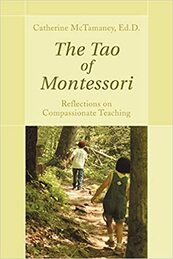
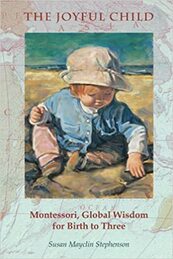
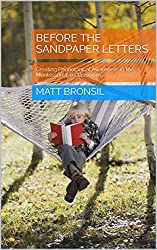
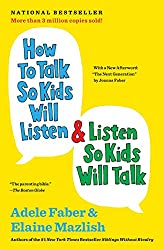
Montessori Blogs
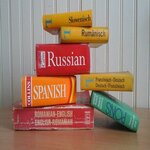
EFL and Montessori
EFL and Montessori
EFL Record Keeping
EFL Record Keeping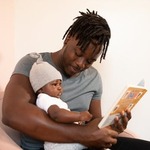
Teaching Reading
Teaching Reading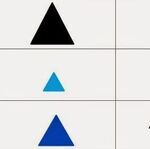
Montessori Grammar
Montessori Grammar
Silent E
Silent E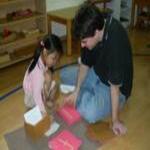
Become a Teacher
Become a Montessori Teacher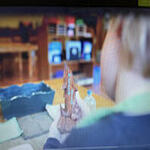
Montessori's Different
Montessori is Different